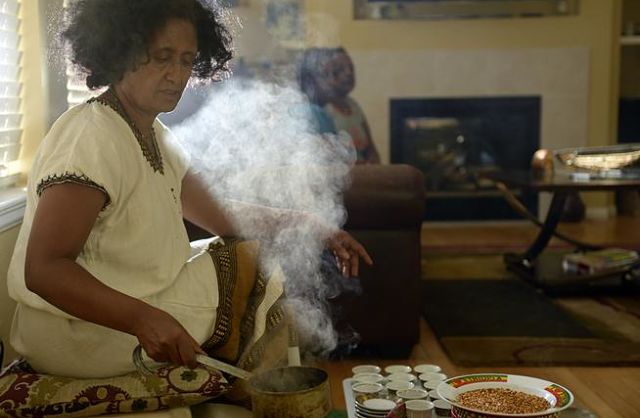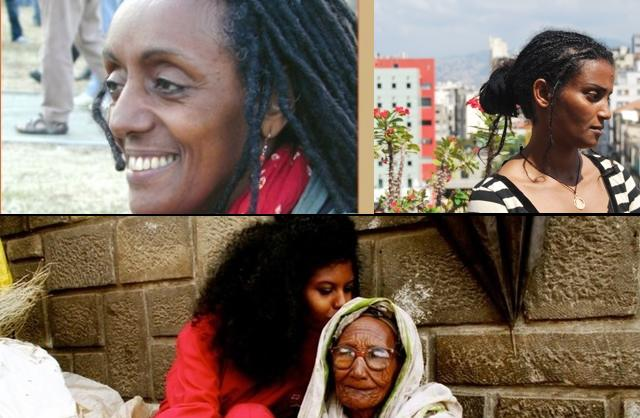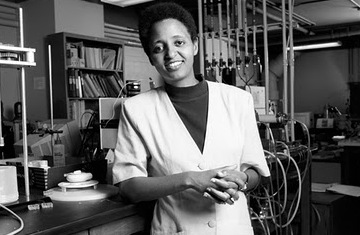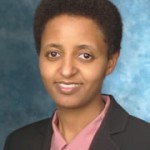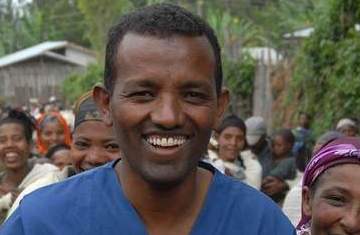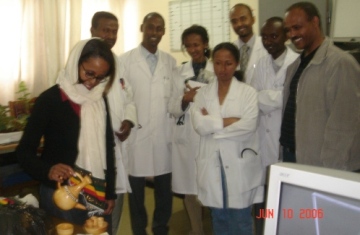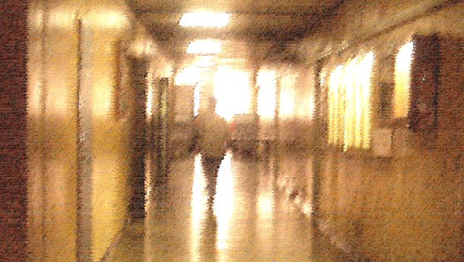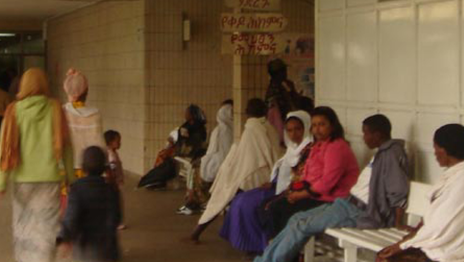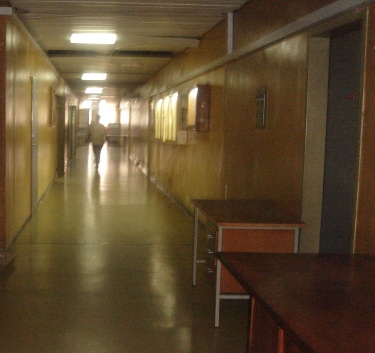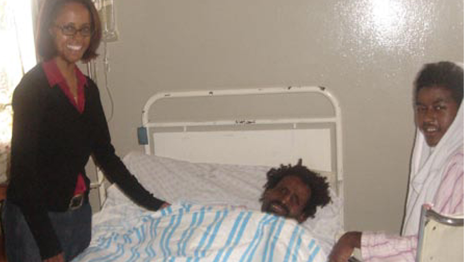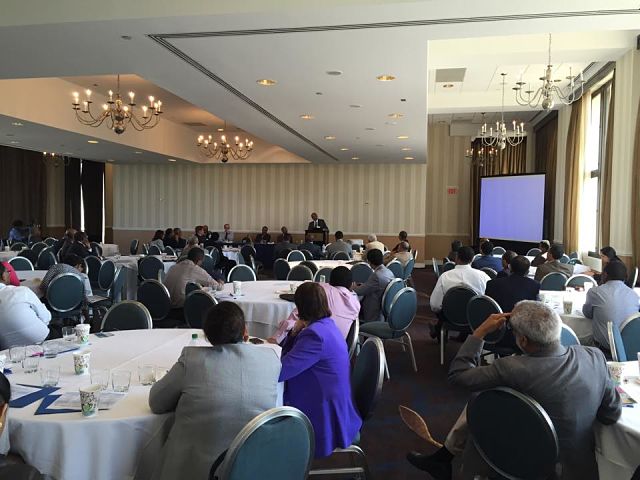 The 2019 Ethiopian Diaspora Conference on Health Care & Medical Education will be held in Arlington, Virginia on Saturday, October 19th. (Courtesy photo)
The 2019 Ethiopian Diaspora Conference on Health Care & Medical Education will be held in Arlington, Virginia on Saturday, October 19th. (Courtesy photo)
Tadias Magazine
By Tadias Staff
October 18th, 2019
New York (TADIAS) — The 11th annual Ethiopian Diaspora Conference on Health Care & Medical Education will take place this weekend in Arlington, Virginia.
Hosted by People to People Inc. (P2P) and the Network of Ethiopian Diaspora Healthcare Professionals, the yearly gathering attracts a diverse group of health practitioners across the country including physicians as well as medical and allied health students. The theme for this year’s conference is “End Stage Renal Disease in Resource Malaligned Countries – Issues of Ethics and Equity.”
Guest speakers for the program include the Ethiopian Ambassador to the United States, Fistum Arega, and several distinguished medical professionals covering a wide array of presentation topics such as enhancing the availability and affordability of pharmaceuticals in Ethiopia as well as promoting “Partnerships in Health; Diaspora Professionals as the link between Ethiopian and US Institutions.”
The event is scheduled to be held on Saturday October 19th at the Residence Inn Arlington, Pentagon City with sponsors including the Mayo Clinic School of Continuous Professional Development (MCSCPD).
Below are some of the speakers listed on the program courtesy of P2P:
Alodia Gabre-Kidan, M.D., M.P.H.
Dr. Alodia Gabre-Kidan is an assistant professor of surgery specializing in colorectal surgery at Johns Hopkins Medicine. She earned her medical degree from the Johns Hopkins University School of Medicine and a masters of public health degree from Columbia University Mailman School of Public Health. She completed general surgery residency at New York Presbyterian Hospital – Columbia Campus and a colorectal surgery fellowship at Cleveland Clinic Florida. She performs a variety of colorectal surgical procedures including minimally invasive options
Getachew Begashaw, PhD
Getachew Begashaw was born and raised in Ethiopia. He completed his undergraduate studies in History at Haile Selassie I University, Addis Ababa, Ethiopia, and Economics at University of California, Santa Cruz. He did both his Masters and Ph.D in Economics and Agricultural Economics at Michigan State University. He is the founder and President of Vision Ethiopia. Dr. Begashaw’s area of studies and research, beside general theories of economics, are primarily focused in public service expenditures, international trade, and economics of development.
Fasika Tedla, M.D.
Dr. Fasika M. Tedla is Associate Professor of Medicine at the Icahn School of Medicine at Mount Sinai and Associate Medical Director of the Kidney Transplant Program at Mount Sinai Hospital in New York. After graduating from Jimma University Faculty of Medicine, he completed his residency in internal medicine at a teaching affiliate of New York Medical College (formerly Our Lady of Mercy Medical Center) and his nephrology, transplant nephrology, and interventional nephrology training at the State University of New York Downstate Medical Center. He also has graduate training and board certification in clinical informatics.
Maaza Sophia Abdi, M.D.
Dr. Maaza Abdi is a gastroenterologist at Johns Hopkins University School of Medicine. She received her medical degree from Georgetown University School of Medicine and completed her Internal Medicine residency and fellowship at MedStar Georgetown University Medical Center. She worked in a private practice setting for ten years before joining Johns Hopkins, where she currently works as a GI hospitalist caring for patients with a variety of gastrointestinal disorders at Johns Hopkins Hospital.
Momina Ahmed, M.D.
After training as an ISN Fellow at the University of Witwatersrand Hospital in 2011 and through a growing collaboration with the University of Michigan, Dr. Momina Ahmed established nephrology programs at SPHMMC to cater for more kidney transplants and treat acute kidney injury.
Tigist Hailu, M.D.
Dr. Tigist Hailu is a general cardiologist in the Johns Hopkins Heart and Vascular Institute of the Division of Medicine. She received her medical degree from Yale University School of Medicine. She completed her medical residency at the Hospital of the University of Pennsylvania and pursued a fellowship in cardiology at New York Presbyterian Hospital, Cornell Campus.She practiced in a private cardiology group for 4 years before joining Johns Hopkins in 2009. In addition to practicing clinical cardiology, she is expert is cardiac imaging including echocardiography and nuclear cardiology.
Sosena Kebede, M.D., M.P.H.
Dr. Sosena Kebede is an Internal Medicine physician with over 17 years of combined clinical, public health, and quality improvement experience with a committing to finding solutions to health system challenges in the US and abroad. She completed her medical degree at the University of North Carolina at Chapel Hill School of Medicine and Internal Medicine residency at New Hanover Regional Medical Center. She obtained a masters of public health degree from the Johns Hopkins Bloomberg School of Public Health. She specializes in the areas of population health, and health service delivery improvement and has several years of domestic and global experience in scientific research and health workforce training.
Merfake Semret, MD
Dr. Merfake Semret is practicing Nephrology at Peninsula Kidney Associates, in Hampton/Newport news/Williamsburg, Virginia. He received medical degree from Addis Ababa University Medical Faculty (Black Lion) and MPH from Royal Tropical Institute, the Netherlands. He then proceeded to serve as Public Health consultant in different parts of SNNPR(Ethipia). Dr. Semret immigrated to the U.S. in 2002 and completed Internal Medicine residency at Wayne State University, Detroit, Michigan and Nephrology fellowship at Mayo Clinic, Rochester, Minnesota. Currently he is practicing Nephrology at Peninsula Kidney Associates, in Hampton/Newport news/Williamsburg, Virginia
Ergeba Sheferaw, M.D.,M.P.H
Dr. Ergeba Sheferaw is a radiologist at Advanced Radiology in Baltimore, MD. She specializes in breast imaging and completed her fellowship at Johns Hopkins University Hospital. She is interested in improving breast cancer care in Ethiopia and recently worked with the first breast imaging fellows at St. Paul Millenium College Hospital. She has been an active member of People to People and now serves as a board member and assistant editor of the newsletter. She completed her medical degree and Master of Public Health from University of North Carolina- Chapel Hill.
Yewondwossen Tadesse Mengistu, M.D.
Yewondwossen Tadesse Mengistu is a Consultant Nephrologist and an Associate Professor of Internal Medicine at the School of Medicine of Addis Ababa University (AAU), Addis Ababa, Ethiopia. Yewondwossen did his undergraduate medical studies at the School of Medicine, Addis Ababa University graduating as an MD in 1984. He did his internal medicine residency training in the same school and completed a fellowship training in Nephrology at the University of Kwazulu Natal, Durban, South Africa, 1999-2000. He has served as the head of the renal Unit in the department of Internal Medicine of the School of Medicine, AAU and the Tikur Anbessa Hospital, Addis Ababa for nearly two decades. He has also served two terms as head of the department of Internal Medicine. Yewondwossen’s research interest is in the epidemiology of kidney diseases and other non-communicable diseases. He is a Past President of the Ethiopian Medical Association and serves in the Council of the African Association of Nephrology (AFRAN). Yewondwossen is a member of the Africa Board of the International Society of Nephrology (ISN) as well as the Continuing Medical Education Committee of the ISN.
Micheas Zemedkun, M.D.
Dr. Zemedkun received his MD degree from Harvard Medical School. His residency in internal medicine form New York medical College, fellowship in cardiovascular medicine form MedStar Washington Hospital Center. He is board certified internist and cardiologist from American Board of Internal medicine, and currently practicing around the metropolitan Washington DC area.
Wudneh M. Temesgen, MD
Dr. Wudneh Temesgen is a surgeon who practices general surgery with a focus on minimally invasive surgery. He obtained his medical degree from Gondar College of Medical Sciences. He completed his general surgery residency at Texas Tech University Health Sciences Center and his fellowship in Minimally Invasive Surgery at Brown University. He is currently practicing general surgery in the Maryland and DC area.
Demissie Alemayehu, PhD
Demissie Alemayehu, PhD, is Vice President and Head of the Statistical Research & Data Science Center at Pfizer Inc, and holds a joint appointment with Columbia University, where he is also Director of Graduate Studies (MA) in the Statistics Department. Dr. Alemayehu obtained his first degree from Addis Ababa University, where he was the recipient of the 1980 Science Faculty Gold Medal. Subsequently, he earned a PhD degree in Statistics from the University of California at Berkeley. In the United States, Dr. Alemayehu has received numerous accolades, including election as a Fellow of the American Statistical Association in recognition of his superlative achievements in original research, teaching and service to the profession. Dr Alemayehu is an active member of various professional societies and institutions, and serves on advisory boards in major universities, including Stevens Institute of Technology and RUSIS at Oregon State University. He has served as a reviewer for and on the editorial boards of major scientific journals. He has published extensively on statistical methodology and applications in medical research and has coauthored at least two monographs. Dr Alemayehu’s research interest spans diverse topics ranging from asymptotic theory in mathematical statistics to leveraging modern machine learning tools in drug development. More recently, Dr Alemayehu has been interested in exploring the potential of the digital revolution to influence decision making in such developing countries as Ethiopia, with emphasis on the advancement of good governance and protection of natural and cultural heritage.
Anteneh Habte, MD
Dr. Anteneh Habte is currently serving as Chairman of People to People’s (P2P) Board of Directors. He is the Medical Director of the Community Living Center at the Veterans Affairs Medical Center in Martinsburg, WV and clinical faculty at both the West Virginia School of Medicine and the Lewisburg School of Osteopathic Medicine. Dr. Anteneh is a diplomat of the American Board of Internal Medicine and the American Academy of Hospice and Palliative Medicine, and a certified educator of palliative and end-of-life care (EPEC). He coordinates People to People (P2P)’s effort to promote the training of medical personnel and provision of clinical services in hospice and palliative care in Ethiopia. Dr. Anteneh is one of the editors of a series of web based modules in Hospice and Palliative Care for Ethiopia prepared under the auspices of the Mayo Clinic Global HIV Initiative. He is also a contributor to P2P’s recently published ‘Triangular Partnership’ manuscript.
Dawd S. Siraj, M.D., MPH&TM, FIDSA
Dr. Dawd S. Siraj is a Professor of Medicine, and an infectious disease physician at the University of Wisconsin. He received his medical degree from Jimma University in Ethiopia. He completed his internal medicine residency training at St. Barnabas Hospital Bronx, NY. He subsequently completed an Infectious Diseases fellowship and a Master of Public Health and Tropical Medicine, at Tulane University,in New Orleans, Louisiana.. He currently serves as the Vice President and Board Member of Ethio-American Doctors Group, Inc and People to People (P2P. He has actively participated in numerous Infectious Diseases and HIV activities in Ethiopia,
Enawgaw Mehari, MD.
Dr. Enawgaw Mehari, Adjunct Professor in Clinical Neurolgy is a Neurologist at Kings Daughter Medical Center in Kentucky and founder of People to People USA (P2P). He founded P2P at the end of his residency training and has since expanded the services of P2P, including opening the People’s Free Clinic in Morehead, KY, in 2005 for the working poor who have no health insurance.
Melaku Demede M.D., MHSc, FACC, FSCAI
Dr. Melaku Demede graduated from AAU faculty of Medicine in 1995 and completed internship, residency and fellowship from SUNY Downstate Health Science Center Brooklyn, NY. Had done Post graduation from Victoria University of Manchester in MHSc Epidemiology and Biostatistics. Currently, He is Chief of Cardiology and Medical Director of Cardiac Cath Lab in ARH Beckley, WV. Assistant Professor of Internal Medicine West Virginia University School of Medicine, Assistant Professor of Internal Medicine UK community Faculty, WVU DO School and Lincoln Memorial University School of Medicine. Board Certified in Intervention Cardiology, Cardiovascular Medicine, Internal Medicine, Echocardiography and Nuclear Cardiology.
Kebede H. Begna, M.D., Msc.
Dr. Kebede H. Begna an Associate Professor and consultant haematologist, practicing at the Mayo Clinic in Rochester, MN. He received his medical degree from Gondar University in Ethiopia. He finished internal medicine residency at St. Vincent Medical College, an affiliate of New York Medical College, where he was the Chief Resident. He completed hematology and medical oncology fellowship and obtained Masters in clinical research at the University of Minnesota, and later joined the Mayo Clinic, Division of Hematology in Rochester, Minnesota. He authored and co-authored many publications and book chapter. He currently serves on the board of Ethio-American Doctors Group, Inc.
Fasika A. Woreta, M.D., M.P.H.
Dr. Fasika A. Woreta is an assistant professor of Ophthalmology at the Wilmer Eye Institute at the Johns Hopkins University School of Medicine. She completed her medical degree, internship, and residency at the Johns Hopkins University School of Medicine. She performed a fellowship in cornea and refractive surgery at the Bascom-Palmer Eye Institute at the University of Miami and a cataract fellowship at Moorfields Eye Hospital in London, UK. She is the director of the eye trauma center and program director of the ophthalmology residency program at Johns Hopkins. She specializes in corneal and external eye diseases, including cataracts, ocular trauma, and refractive surgery.
Tinsay A. Woreta, M.D., M.P.H
Dr. Tinsay A. Woreta is an assistant professor of medicine and a gastroenterologist/hepatologist at Johns Hopkins University school of medicine.. She received her medical degree, internal medicine residency, and gastroenterology/transplant hepatology fellowship from Johns Hopkins University. She specializes in acute and chronic liver diseases, and has authored many publications and book chapters.
Yonas E. Geda, M.D.
Dr. Yonas E. Geda is a Professor of Neurology and Psychiatry. He is a Consultant in the Department of Psychiatry & Psychology, and Department of Neurology, Mayo Clinic. Following a formal search process, Dr. Geda was recently named Associate Dean for Diversity and Inclusion for all the 5 colleges/ schools at the Mayo Clinic College of Medicine and Science. Dr. Geda earned his doctor of medicine (M.D.) degree from Addis Ababa (Haile Selassie) University, and subsequently pursued his trainings in Psychiatry, Behavioral Neurology, and a Master’s of Science (MSc) degree in biomedical sciences at Mayo Clinic in Rochester, Minnesota. His research examines the impact of lifestyle factors and neuropsychiatric symptoms on brain aging and mild cognitive impairment. He has published over 115 peer reviewed papers in major journals including in Neurology, JAMA Neurology, JAMA Psychiatry and American Journal of Psychiatry. Dr. Geda has several institutional, national and international leadership roles. He is a member of the Science Committee of the French Alzheimer’s research group (Groupe de Recherche sur la maladie d’Alzheimer; GRAL). He is the current chair of the award committee of the Neuropsychiatric syndromes professional interest area (PIA) of the Alzheimer’s Association International Conference (AAIC). He is a recipient of many awards, including a medal from the City of Marseille, France in 2003, and from the City of La Ciotat, France in 2016 for his contributions to the field of Alzheimer’s research. As a resident, he won the prestigious Mayo Brother’s Distinguished Fellowship Award.
Keith Martin, M.D
Dr. Keith Martin is the founding Executive Director of the Consortium of Universities for Global Health (CUGH) based in Washington, DC. The Consortium is a rapidly growing organization of over 170 academic institutions from around the world. It harnesses the capabilities of these institutions across research, education, advocacy and service to address global challenges. It is particularly focused on improving health outcomes for the global poor and strengthening academic global health programs. Dr. Martin is the author of more than 150 editorial pieces published in Canada’s major newspapers and has appeared frequently as a political and social commentator on television and radio. He is currently a board member of the Jane Goodall Institute, editorial board member for the Annals of Global Health and an advisor for the International Cancer Expert Corps. He has contributed to the Lancet Commission on the Global Surgery Deficit, is a current commissioner on the Lancet-ISMMS Commission on Pollution, Health and Development and is a member of the Global Sepsis Alliance.
—
If You Go:
Saturday, October 19th, 2019
Time: 7:30AM – 5:45PM
Residence Inn Arlington Pentagon City
550 Army Navy Drive Arlington, VA 22202
Registration Fees
Physicians and professionals: $150(all day); $100 (half day)
Allied Health Professionals, residents and fellows:
$100(all day); $75(half day)
Medical and allied health students: free (with ID)
(Fee will also covers cost of food and refreshments)
Join the conversation on Twitter and Facebook.–





